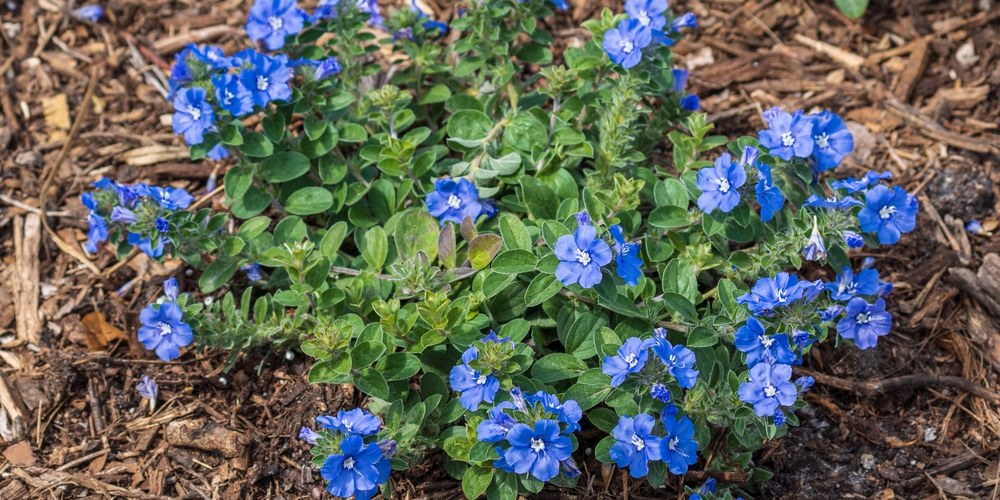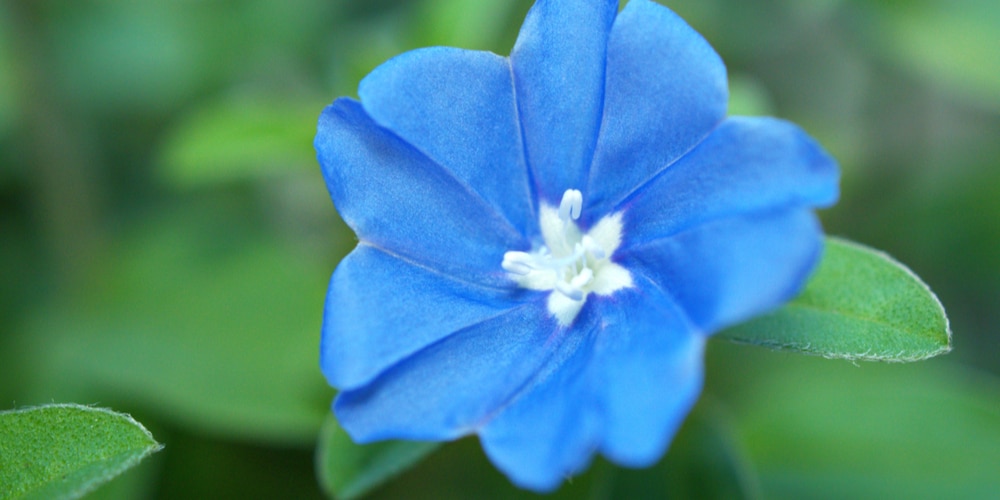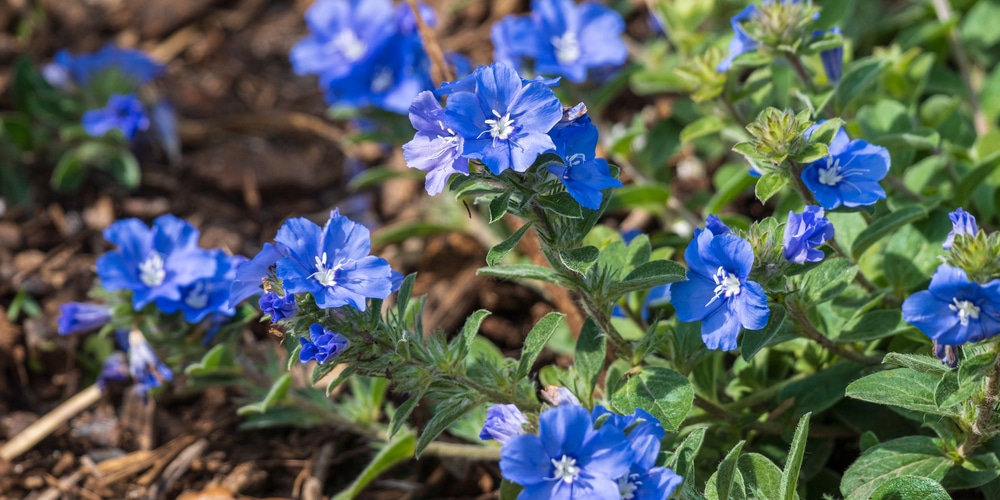Blue Daze Evolvus Glomeratus is a dense and stunning low-growing flowering plant that can add a splash of delicate blue color to your garden.
Because of its spread patterns, it makes for a perfect ground cover, especially if you need a colorful and dense backdrop in your yard. This plant is versatile and drought-resistant: it can take hold in your garden if you allow it.
Also, the elegant blooms attract plenty of beneficial pollinators, including butterflies.
If you live in an area where deer might pass through, you can rest assured they won’t choose your blue daze as their meal! These flowers do not fall in these animals’ list of favorites.
However, keep in mind that a hungry deer will feed on anything it will find on its way.
To learn more about Blue Daze Evolvus Glomeratus and how to care for it, you’ve landed in the right place. Indeed, this essential guide includes everything you should know about this plant, from some guidelines in taking care of it to tips for propagating it.
What you Need to Know About Blue Daze Evolvus Glomeratus

Blue daze, also known as Morning Glory or Brazilian Dwarf, is a beautiful perennial that you can grow in containers, as a groundcover, or ornamental in hanging baskets. If you live in areas where winters are cold, it will perform better as an annual: Blue daze doesn’t resist frost.
The plant is relatively easy to grow and doesn’t need much care. However, you must ensure you can meet its basic requirements. For instance, Blue daze loves heat and sun: make sure you plant it somewhere it can receive both.
Blue daze’s foliage is aesthetically appealing and creates a perfect backdrop to other plants. Plus, from spring to fall, you’ll be able to enjoy delicate blue-colored blooms that open in the morning and close in the evening.
If you have pets at home, don’t worry. This plant isn’t toxic for either humans or animals.
How to Care for Blue Daze Evolvus Glomeratus
As we mentioned, caring for blue daze evolvus glomeratus is not hard. Still, you must know what it needs to grow a thriving plant. In this section, you’ll find everything you need to know to recreate optimal conditions for Blue Daze to grow in your garden.
Light
This plant grows and blooms in full sun and won’t produce flowers in the shade. For best results, place your Blue Daze somewhere it can receive at least six hours of sunlight per day.
Direct light will also help your plants maintain their compact shape and lush foliage. While the plant can grow indoors too, you will get better results with direct sun.
However, if you live somewhere cold, you may have to transfer your plant inside to prevent frost damage.
Water and Soil Needs
This plant can adapt to various soil conditions, including sandy ones. If you live in coastal areas, this plant might help you create a beautiful landscape. But for it to thrive, you must ensure the ground is well-draining.
You may have to add mulch around your plants to increase water retention, especially if your soil is poor. Add two to three inches of organic matter to protect your Blue daze from weeds and maintain an optimal temperature in the ground.
Don’t forget that too much water might cause your plants to suffer from fungal diseases that shorten their lifespan: make sure your plants are moist but not wet.
These plants prefer slightly acidic conditions but will tolerate neutral pHs too.
Temperature Requirements
These plants are happiest in temperatures above 65F and will survive even during the hottest months of the year. On the contrary, they will die in cold winters. Under optimal conditions, this plant can reach up to 12 inches in height and spread around two to three feet.
What USDA climate zone can it survive?
Native to South America, Blue Daze Evolvus Glomeratus performs well in USDA hardiness zones between 8 and 11.
Fertilizer
Regular fertilization can help you get healthier blooms and more prolific flower production. Choose a general-purpose liquid fertilizer for best results. Don’t forget to read the instructions and apply your product accordingly.
If you live somewhere warm, where winters are mild, you can grow your Blue Daze as a perennial: in that case, don’t feed your plant in the winter when it goes dormant.
Common Diseases
Blue daze isn’t susceptible to diseases. As long as you provide it with adequate space for growth and airflow, you won’t have to worry too much about pests or diseases.
Common Problems
Blue daze is a hardy plant that rarely suffers from problems. However, one of the major issues you might have to deal with is fungal infections, especially if you live somewhere where rain falls regularly and abundantly. Soggy soil can cause your plants to die. However, the good thing is that Blue Daze grows fast: you can quickly replace it as soon as you notice something off with it.
Propagation
You can propagate blue daze from stem cuttings or seeds. You can expect to get satisfying results with both methods and get new plants in as little as two months.
However, propagating your plants from cuttings will give you better chances to succeed. Propagate your blue daze from cuttings in late spring or summer. Gather a four-inches long piece from a healthy stem without flowers and dense in foliage.
Take away the leaves from the bottom half and submerge them in a rooting hormone. Don’t forget to read the instruction carefully!
Place your cuttings in a starter pot with fertile potting mix and press the soil firmly around them. Don’t forget to water your stems regularly and place them under indirect light.
If you can’t locate your new plants indoors, transfer them outside under light shade. Cover your new plants with a plastic bag to maintain a warm environment and improve water retention.
You will get roots in around three to four weeks, provided that you give them proper care. You can transplant your cuttings to the garden when you notice new growth emerging.
Related Article: Blue Daze Companion Plants

